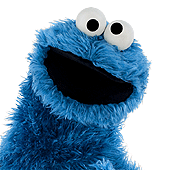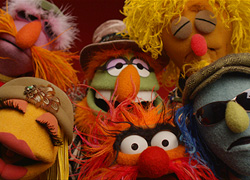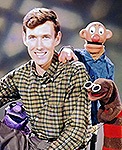Was Once Ernie said:
Yes, sorry again... I do mean rear-projection. I read about the screen door effect before I bought it, but I'm not seeing it. And the viewing angle is vastly improved over CRT rear-projectors. I have to assume it's improved in LCD rear-projectors also, because it's quite good on my set.
It's getting better generally. From what I've seen, the DLP sets seem to have the best viewing angles, then LCDs and finally CRTs. However, none of them are great, and the vertical angle is usually much much worse than the horizontal, so you really need to have the screen set up at the right height for viewing.
My main problem with LCD TV pictures is that they look flat and artificial. LCDs are great for computer graphics, but I've never seen one that could display an acceptable video picture. The rear-pro sets seem to be a bit better than the direct-view in that regard, but I finally had the chance to put some professional test signals into the 50" Sony earlier today and was seriously disappointed with the results. The Pioneer and Panasonic plasmas I tried, by contrast, produced results almost as good as my studio-grade CRT

There is, after all, a reason why professionals still use CRTs... Sony do a very very nice 36" HD tube, but it has a pricetag of around $25k :-(
I think we got burned over here by the Time-Life DVD releases. They were just poor conversions and worse mastering. It reminded me of what PAL show conversions used to look like in the early 1970's, before digital. Almost like being under water. The new Muppet Show Season Set was a vast improvement over the earlier releases.

The Time-Life discs were tolerable for NTSC. They were a bit soft, mainly due to the lower vertical resolution, and suffered from a degree of motion-judder, but I've never seen a standards-conversion (in either direction) which didn't have that. Unfortunately when TL decided to make UK releases, they just converted their NTSC copies back to PAL, which unsurprisingly looked atrocious.
One of the earliest PAL->NTSC conversions was developed by the BBC, and involved some clever maths to create the additional fields from the originals. Results were very good for the time, although I understand that motion-blur and judder was noticeable (I have seen the tapes, but only as reconversions back to PAL which introduces its own set of issues, so I can't say for certain what they looked like). A number of BBC programmes now only survive as these NTSC conversions but fortunately, because of the way in which the conversion was done, it has been possible to develop software which can "unpick" the maths and recover the original video fields. The resulting pictures are only slightly worse than the original PAL recordings would have been (allowing for increased noise and so on) and vastly superior to the results of a regular standards-conversion

So far as I know, the earliest TMS conversions weren't even this sophisticated. I have copies dubbed from the NTSC broadcast masters in 1983, and it appears that the conversion was done by simply repeating every fifth field...
The approach I currently use for conversions is to do an adaptive deinterlace of the source material in order to preserve as much vertical detail as possible, and then selectively blend fields together to produce the required output. This introduces a very small amount of blurring, but it's not really noticeable unless you know what to look for. PAL->NTSC works best since the destination format is of lower resolution, but both are practical. It's also fast enough to work in real-time on a reasonably-specced PC

The one thing it can't deal with is motion-judder, but from experience this doesn't seem to be a problem unless there is a lot of very fast movement or a smooth movement such as a scrolling credit-roll.

 Welcome to the Muppet Central Forum!
Welcome to the Muppet Central Forum! Back to the Rock Season 2
Back to the Rock Season 2 Sesame Street Season 54
Sesame Street Season 54 The Muppets Mayhem premieres
The Muppets Mayhem premieres Bear arrives on Disney+
Bear arrives on Disney+ Sam and Friends Book
Sam and Friends Book
 There is, after all, a reason why professionals still use CRTs... Sony do a very very nice 36" HD tube, but it has a pricetag of around $25k :-(
There is, after all, a reason why professionals still use CRTs... Sony do a very very nice 36" HD tube, but it has a pricetag of around $25k :-(